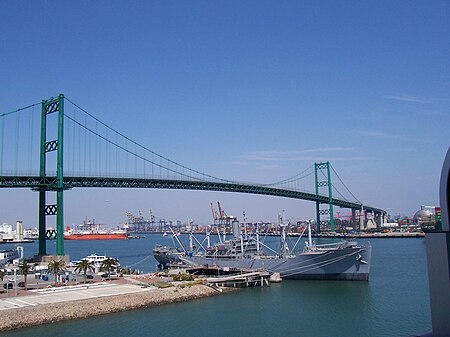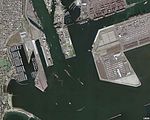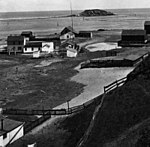SS Lane Victory
1945 shipsIMO numbersMMSI NumberMuseum ships in CaliforniaMuseums in Los Angeles ... and 8 more
National Historic Landmarks in CaliforniaSan Pedro, Los AngelesShips built in Los AngelesShips on the National Register of Historic Places in Los AngelesVictory shipsWorld War II merchant ships of the United StatesWorld War II museums in CaliforniaWorld War II on the National Register of Historic Places in California

SS Lane Victory is an American Victory-class cargo ship used in World War II, the Korean War and Vietnam War. The ship was preserved in 1989 to serve as a museum ship in the San Pedro area of Los Angeles, California. As a rare surviving Victory ship, she was designated a U.S. National Historic Landmark. SS Lane Victory was named after Lane College, which was established as a high school for black youths in 1882 at Jackson, Tennessee, by Isaac Lane, a bishop of the Colored Methodist Episcopal Church in America.
Excerpt from the Wikipedia article SS Lane Victory (License: CC BY-SA 3.0, Authors, Images).SS Lane Victory
Dave Arian Way, Los Angeles
Geographical coordinates (GPS) Address Nearby Places Show on map
Geographical coordinates (GPS)
| Latitude | Longitude |
|---|---|
| N 33.717222222222 ° | E -118.27333333333 ° |
Address
Dave Arian Way
90731 Los Angeles
California, United States
Open on Google Maps











